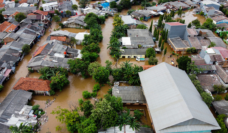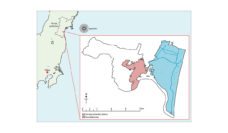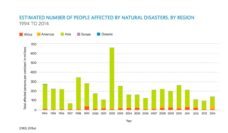As a critical element of human evolution, natural disasters have constantly shaped and reshaped how society is organized and our psychological bonds with each other. Entering the modern age has not made us immune to natural disasters. Each year 60,000 human lives in the U.S. are lost to natural disasters.
The direct impact of one disaster is usually contained in one region due in part to support from FEMA and other organizations coordinating the response. However, the psychological impact is much more difficult to contain in this social media age. Previous studies have found that people start picturing the possibility of their own death, a phenomenon known as mortality salience. Mortality salience creates significant stress and may cause people to rethink their tolerance for risk. As a result, risky behaviors, such as compulsive consumption, and substance use may increase.
To understand and counteract these detrimental behaviors, our team turned to human evolution. Our human ancestors faced frequent natural disasters. Instead of releasing their stress through unhealthy behaviors, they found an evolution-beneficial strategy by simply staying in close proximity with others. Specifically, we examined the role of family gathering (also known as family colocation) on mental health immediately following Hurricane Florence. Florence pummeled Wilmington, NC on September 14, 2014, destroying 30,000 homes, killing 22 people, and causing $24 billion in damages.
Using 1 billion mobile location data records, we tracked the movements of residents in Wilmington and three other cities (Charleston, SC, Chattanooga, TN, and Knoxville, TN) that were near the storm path but only experienced low to medium-level rainfall. We then compared movement in these areas to two control cities off the hurricane’s path — Savannah, GA and Newport News, VA.
Relative to the control cities, family gathering in Wilmington strongly increased, by 18.9%, and lasted for at least three months. A surprising but interesting finding was that family gathering in the partially affected cities increased more than in Wilmington. This demonstrates the existence of the psychological impact, as no significant disruptions were observed in the Charleston, Chattanooga, or Knoxville.
A deeper look into the data shows that the increase of family huddling in Wilmington was lower than in the partially affected cities only in the first month after the hurricane. In the second and third months, Wilmington quickly outperformed all other cities in terms of family colocation. Infrastructure damages in Wilmington required restorations, such as purchasing home repair materials and removing neighborhood debris. As a result, family colocation fell in the first week after landfall. Once infrastructure was restored, Wilmington’s family gathering level surpassed all other cities. Different socioeconomic groups also exhibited distinctive reactions. Family colocation increased more for people with comparatively higher incomes.
Hurricane Florence affected nearby cities both physically and psychologically. Therefore, when planning future disaster recovery efforts, partially affected cities should also receive resources, especially to support mental health. Low-income communities will also benefit from mental health resources to overcome the potential social damage caused by a natural disaster.
Photo via Getty Images
















